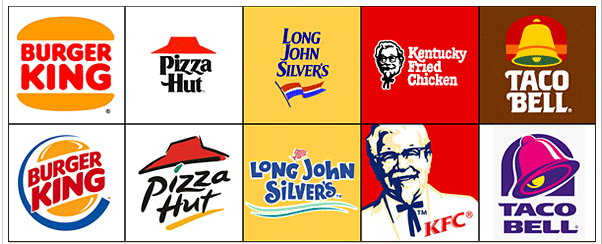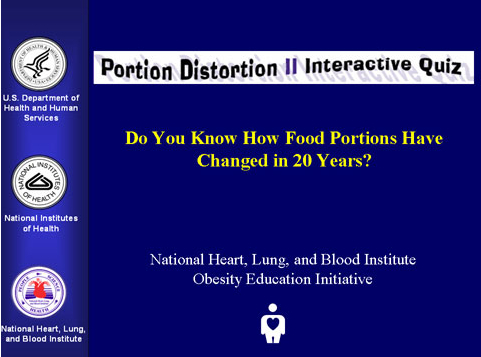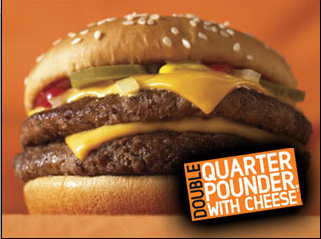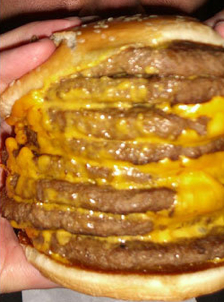Fast Food Explorer
Do you ever wonder what you’re really consuming at some of the fast food restaurants? How many calories does the food item contain? How much fat is there? How much sodium? Is there any fiber? How about protein?
Here’s a resource you may not want to miss trying for yourself. Ignore the ads, and go to the Fast Food Explorer where you can learn a lot more about some of the frequently ordered items at some of our most popular fast food restaurants.
We encourage you to check out this resource. It’s very interesting!
LINK

Here’s a resource you may not want to miss trying for yourself. Ignore the ads, and go to the Fast Food Explorer where you can learn a lot more about some of the frequently ordered items at some of our most popular fast food restaurants.
We encourage you to check out this resource. It’s very interesting!
LINK

Survey of 13 Restaurants
The Center for Science in the Public Interest surveyed 13 popular chain restaurants that offer children’s menus and provide nutritional data. Some of their findings were as follows:
Subway: They concluded that Subway offered a healthy choice with its “Fresh Fit for Kids” meal, a half sub with turkey or ham, apple slices or raisins and low-fat milk. This meal contains 430 calories, the limit that the Center considers healthy for a child 4-8 years old.
As of August 2008 when the Center’s report became public, five other restaurants were found using every possible combination of child’s meal to exceed the 430-calorie limit. These restaurants were:

For McDonald’s, 93% of its Happy Meal and related choices contained too many calories together with lots of fat and salt, according to Margo Wootan, Nutrition Policy Director for the Center. McDonald’s responded to the Center’s report by stating that since January ’08 it has offered a 375 calorie Happy Meal of Chicken McNuggets, Apple Dippers and low-fat milk.
Kentucky Fried chicken has cut the heart clogging trans-fat from its cooking and boasts on its website that it is offering “lower fat, lower calorie choices,” including vegetables and salads. However, one KFC option called a Kid’s Laptop Meal—comes with popcorn chicken, baked beans, a biscuit, Teddy grahams and fruit punch and packs a whopping 940 calories!!! Wootan points out that this is more than 2/3 of the 1300 calories an active child needs all day!
KFC’s meal was not the highest in calories: Chili’s country fried chicken crispers, cinnamon apples and chocolate milk weighed in at 1,020 calories!
Subway: They concluded that Subway offered a healthy choice with its “Fresh Fit for Kids” meal, a half sub with turkey or ham, apple slices or raisins and low-fat milk. This meal contains 430 calories, the limit that the Center considers healthy for a child 4-8 years old.
As of August 2008 when the Center’s report became public, five other restaurants were found using every possible combination of child’s meal to exceed the 430-calorie limit. These restaurants were:
- Kentucky Fried Chicken
- Taco Bell
- Sonic
- Jack in the Box
- Chick-fil-A

For McDonald’s, 93% of its Happy Meal and related choices contained too many calories together with lots of fat and salt, according to Margo Wootan, Nutrition Policy Director for the Center. McDonald’s responded to the Center’s report by stating that since January ’08 it has offered a 375 calorie Happy Meal of Chicken McNuggets, Apple Dippers and low-fat milk.
Kentucky Fried chicken has cut the heart clogging trans-fat from its cooking and boasts on its website that it is offering “lower fat, lower calorie choices,” including vegetables and salads. However, one KFC option called a Kid’s Laptop Meal—comes with popcorn chicken, baked beans, a biscuit, Teddy grahams and fruit punch and packs a whopping 940 calories!!! Wootan points out that this is more than 2/3 of the 1300 calories an active child needs all day!
KFC’s meal was not the highest in calories: Chili’s country fried chicken crispers, cinnamon apples and chocolate milk weighed in at 1,020 calories!
Calories and Portion Sizes
Have you ever noticed that the portion sizes seem to be getting bigger! Have you ever wondered how much bigger the portion sizes are becoming?
Take the Portion Distortion Quiz to see how sizes of some common foods we find in restaurants have changed in the past 20 years. Be sure to note the added calories!

Take the Portion Distortion Quiz to see how sizes of some common foods we find in restaurants have changed in the past 20 years. Be sure to note the added calories!

Change is coming: Stay tuned!
Nearly three-dozen states, cities and counties have passed or introduced laws that would require calorie posting in some form. There are also efforts to make calorie postings uniform nation wide. Stay tuned!
People today are becoming more and more aware of the large numbers of calories they are consuming with some of the snacks and meals they are eating out.
There are some signs that restaurants and food companies are beginning to lighten up some of their recipes. According to the companies, it’s consumer demand that is making them change not the threat of legislation.
Dunkin' Donuts recently added a low-calorie egg white breakfast sandwich. McDonald's reduced the number of calories in its large French fries from 570 calories to 500 calories. According to a company spokesperson, it was consumer demand that caused Yum Brands, which owns KFC, Taco Bell, Pizza Hut and other fast-food restaurants, to announce that they will start voluntarily posting calorie counts for individual servings in its restaurants nationwide in late 2008. Once consumers start seeing the calories posted, the options they choose may well be affected and in turn the more creative the companies need to become to keep their customers happy.
Another development: The 100-calorie snack may be becoming this decade's answer to the fat-free SnackWell cookie according to some experts as more brands introduce tiny portions of things like Cool Ranch Doritos and Clif bars.
Another idea that is being tried is to trim the amount of the item given. We just may see smaller food items. Consider getting smaller brownies, for example. Also a high calorie main dish may be cut in size and more salad greens may be used to fill out the plate. Will these smaller portions mean smaller prices? Not necessarily!
People might be changing their eating habits, but some restaurant owners still remain skeptical. Especially skeptical are those who have already tried to offer lower calorie food and have not had good results. People just don’t choose these options.
"We talk skinny and eat fat," said Tim Ryan, president of the Culinary Institute of America.
Based on an article by: Kim Severson, New York Times, October 29, 2008


People today are becoming more and more aware of the large numbers of calories they are consuming with some of the snacks and meals they are eating out.
There are some signs that restaurants and food companies are beginning to lighten up some of their recipes. According to the companies, it’s consumer demand that is making them change not the threat of legislation.
Dunkin' Donuts recently added a low-calorie egg white breakfast sandwich. McDonald's reduced the number of calories in its large French fries from 570 calories to 500 calories. According to a company spokesperson, it was consumer demand that caused Yum Brands, which owns KFC, Taco Bell, Pizza Hut and other fast-food restaurants, to announce that they will start voluntarily posting calorie counts for individual servings in its restaurants nationwide in late 2008. Once consumers start seeing the calories posted, the options they choose may well be affected and in turn the more creative the companies need to become to keep their customers happy.
Another development: The 100-calorie snack may be becoming this decade's answer to the fat-free SnackWell cookie according to some experts as more brands introduce tiny portions of things like Cool Ranch Doritos and Clif bars.
Another idea that is being tried is to trim the amount of the item given. We just may see smaller food items. Consider getting smaller brownies, for example. Also a high calorie main dish may be cut in size and more salad greens may be used to fill out the plate. Will these smaller portions mean smaller prices? Not necessarily!
People might be changing their eating habits, but some restaurant owners still remain skeptical. Especially skeptical are those who have already tried to offer lower calorie food and have not had good results. People just don’t choose these options.
"We talk skinny and eat fat," said Tim Ryan, president of the Culinary Institute of America.
Based on an article by: Kim Severson, New York Times, October 29, 2008
